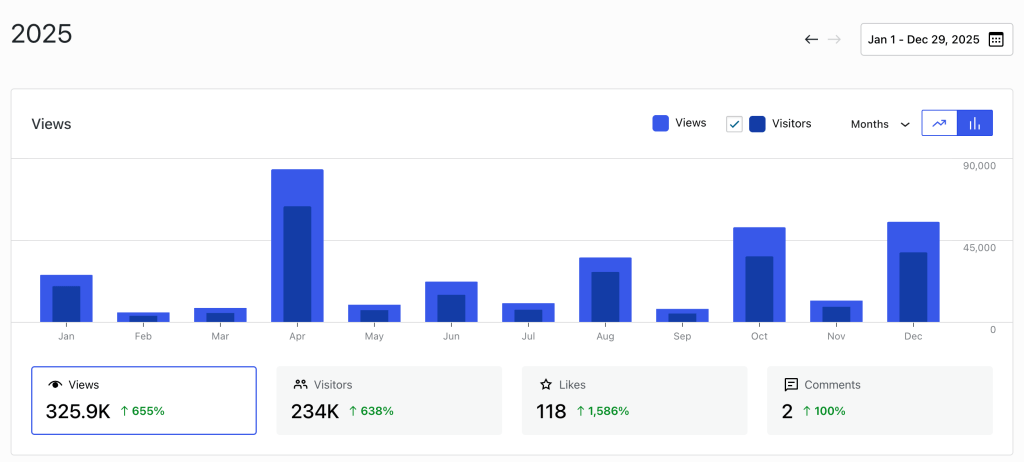Well...I'm think I'm getting close to hitting the end of the road for this AoC. I'll try to make more progress on Part 2 of Day 11 and then maybe revisit Part 2 of Day 7, but....I'm starting to run out of ideas.
https://adventofcode.com/2025
https://github.com/JasonBock/AdventOfCode2025
Steve Martin: When the Gospel of Agile Becomes a Barrier to Change
Read the full Show Notes and search through the world's largest audio library on Agile and Scrum directly on the Scrum Master Toolbox Podcast website: http://bit.ly/SMTP_ShowNotes.
"It took me a while to realize that that's what I was doing. I felt the reason wasn't working was them, it wasn't me." - Steve Martin
Steve carried the Scrum Guide like a Bible in his early days as an Agile coach. He was a purist—convinced he had an army of Agile practitioners behind him, ready to transform every team he encountered. When teams questioned his approach, he would shut down the conversation: "Don't challenge me on this, because this is how it's supposed to be." But pushing against the tide and spreading the gospel created something unexpected: resistance. The more Steve insisted on his purist view, the more teams pushed back. It took him a couple of years to recognize the pattern. The problem wasn't the teams refusing to change—it was his approach. Steve's breakthrough came when he started teaching and realized he needed to meet people where they are, not force them to come to him. Like understanding a customer's needs, he learned to build empathy with teams, Product Owners, and leaders. He discovered the power of creating personas for the people he was coaching, understanding their context before prescribing solutions. The hardest part wasn't learning this lesson—it was being honest about his failures and admitting that his righteous certainty had been the real impediment to transformation.
Self-reflection Question: Are you meeting your teams where they are, or are you pushing them toward where you think they should be?
[The Scrum Master Toolbox Podcast Recommends]
🔥In the ruthless world of fintech, success isn't just about innovation—it's about coaching!🔥
Angela thought she was just there to coach a team. But now, she's caught in the middle of a corporate espionage drama that could make or break the future of digital banking. Can she help the team regain their mojo and outwit their rivals, or will the competition crush their ambitions? As alliances shift and the pressure builds, one thing becomes clear: this isn't just about the product—it's about the people.
🚨 Will Angela's coaching be enough? Find out in Shift: From Product to People—the gripping story of high-stakes innovation and corporate intrigue.
[The Scrum Master Toolbox Podcast Recommends]
About Steve Martin
You can link with Steve Martin on LinkedIn.
Steve is an Agile Coach, mentor, and founder of The Agile Master Academy. After over 14 years leading Agile transformation programmes, he's on a mission to elevate Scrum Masters—building high-performing teams, measurable impact, and influence—and raising industry standards of Agile mastery through practical, evidence-led coaching. You can also find Steve's insights on his YouTube channel: Agile Mastery Show.
Download audio: https://traffic.libsyn.com/secure/scrummastertoolbox/20251229_Steve_Martin_M.mp3?dest-id=246429
Scott Hanselman is a teacher at heart. He speaks all over to whoever will listen. He's have written code that you, dear listener, has used. Scott has been blogging, coding, and podcasting a LONG time. He codes, writes, speaks, empowers, promotes, braids, learns and listens - usually not in that order. And he's a Vice President at Microsoft in his day job focusing on Developer Community. You can find him on YouTube, TikTok, Instagram, and Mastodon! His Hanselminutes podcast has surpassed 900 episodes, and his Azure Friday show, over 750 episodes. Connect with him at hanselman.com
Mentioned in This Episode
Scott Hanselman's TEDx Portland Talk
Want to Learn More?
Visit AzureDevOps.Show for show notes and additional episodes.
Download audio: https://traffic.libsyn.com/clean/secure/azuredevops/Episode_382.mp3?dest-id=768873
I started this blog about a year ago with pretty modest expectations. It started as a place to organize my thoughts on management, engineering, and everything else in between. I figured maybe a few colleagues would read it. Maybe some friends?
I really did not expect that I’d have more than 230,000 unique visitors in the first year.

In a single year, this little blog went from basically nothing to nearly 0.2M people reading my random thoughts about software and leadership.
I’m still processing this, honestly.
The April spike in particular caught me off guard, that’s when The Hidden Cost of AI Coding went viral. It hit #1 on Hacker News, got shared around, and suddenly my quiet corner of the internet wasn’t so quiet anymore. October had another bump when Stop Avoiding Politics resonated with people (and also hit #1 on Hacker News). Turns out engineers have a lot of feelings about workplace politics. Who knew.
For those of you who are new here (and statistically, most of you are), here are my personal favorite ones (not necessarily the most read ones) from this year:
- What Actually Makes You Senior (40,000+ views). This went viral on both Hacker News and Reddit, the main takeaway: it’s all about reducing ambiguity/derisking projects. This one clearly struck a nerve.
- Your Strengths Are Your Weaknesses (22,000+ views). The traits that make your best engineers great are usually the same ones causing your biggest headaches. Two sides of the same coin.
- The 7 Most Influential Papers in Computer Science History (32,000+ views). A bit different from my usual stuff. Foundations matter. This was my love letter to the papers that shaped everything we build today.
- Stop Avoiding Politics (40,000+ views). I used to hate workplace politics too. Then I realized that hating politics doesn’t make it go away: it just means decisions get made without you.
- The Management Skill Nobody Talks About (35,000+ views). Repair. That’s the skill. Knowing how to acknowledge your mistakes and fix the damage. Borrowed from a parenting book, applied it to management.
Looking at this list, in hindsight, I can identify something interesting. Most of it is about the human side of engineering. The soft skills stuff. The messy interpersonal dynamics that nobody wants to deal with but everyone secretly struggles with.
Maybe that’s the gap I accidentally filled? There’s no shortage of content about the latest framework or how to scale microservices. But content about how to actually work with humans, manage yourself, navigate your career without losing your mind? That’s harder to find, and maybe that’s my thing.
I don’t have some grand vision for where this goes. I’m still writing mostly for myself (again, to organize my thoughts and learnings). But knowing that these posts are helping people, that someone out there learned something from these, that means something.
So thank you. For reading, for sharing, for the occasional kind email. See you in 2026.

Extension methods have been a core C# feature since version 3.0, enabling developers to add methods to types without modifying source code. With C# 14 and .NET 10, Microsoft introduces extension members—a powerful enhancement that extends beyond methods to include properties, operators, and static members.
This comprehensive guide explores how C# 14 extension members enable you to add mathematical operators to Point, create static factory properties for IEnumerable<T>, and organize extensions more elegantly than ever before.
